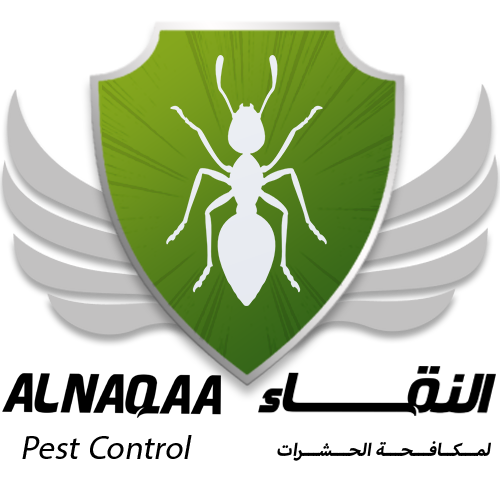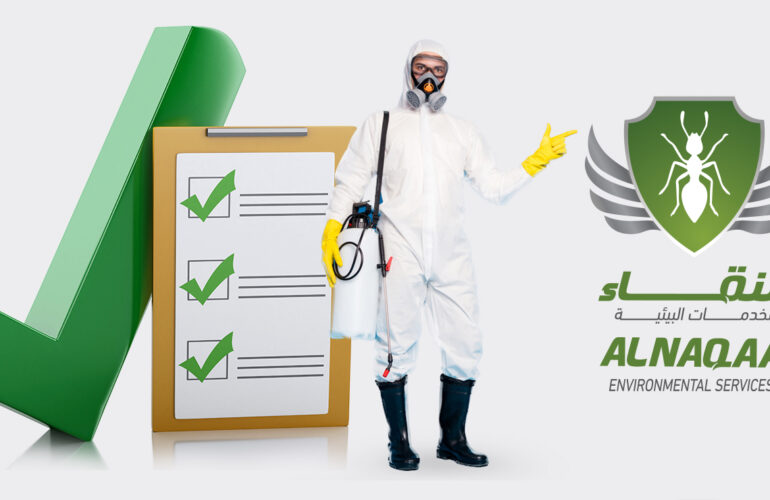My garden plants are infested with mealybugs, what is the solution?
Firstly, what are mealybugs?
The mealybug is a type of small, soft insect that belongs to the family Pseudococcidae. The mealybug resembles the external appearance of aphids but differs slightly in anatomical aspects and small details.
These insects rely on feeding on plant juices that they extract from leaves and stems. They are characterized by having a waxy layer on their bodies, giving them a powdery or waxy appearance. Infestations of mealybugs can cause damage to plants, reducing their growth and productivity.
Top of Form
So, how can I protect my Indian Jasmine tree, Lemon tree, or Guava tree in my private garden?
First, how can I identify if these pests affect my plants?
Here are some effects that mealybugs can have on trees:
- Leaf Damage: Mealybugs feed on leaf cells by sucking out their juices. This can lead to the appearance of yellow or brown spots on the leaves. In severe cases, leaves may turn brown and fall off.
- Stunted Growth: Repeated attacks can lead to overall stunted tree growth. Since they consume plant sap and affect the photosynthesis process, trees can be negatively affected.
- Aesthetic Deterioration: Mealybugs can make trees look unhealthy and damaged, affecting the overall aesthetics of landscapes and gardens.
- Spread of Infection: The presence of mealybugs can lead to the spread of infection among neighbouring trees. They can easily move from one plant to another through wind or other insects.
- Impact on Productivity: In some cases, a significant infestation can reduce fruit or flower production in trees.
Signs that can help you identify the presence of these pests:
- Yellow and Brown Spots: One of the key signs of infestation is the appearance of yellow or brown spots on leaves. These spots may start small and expand over time.
- Fine Webbing: On the undersides of affected leaves, you might notice fine webbing composed of threads. This webbing indicates the presence of mites or their eggs.
- Leaf Curling: Infested leaves might begin to curl or shrink abnormally.
- Color Changes: Leaves affected by mealybugs might take on unnatural colors, such as brown or bronze.
- White Specks: In severe infestations, small white specks, which are eggs, might appear on the leaves.
To address the issue, you can consider the following steps:
- Isolation: If you identify an infested plant, isolate it from other plants to prevent the mites from spreading.
- Spraying: Apply a targeted insecticidal soap or neem oil spray to the affected areas. Be sure to follow the instructions on the product label.
- Pruning: If the infestation is localized, prune and remove the affected leaves or branches.
- Natural Predators: Introduce natural predators like ladybugs or predatory mites, which feed on mealybugs.
- Regular Monitoring: Keep an eye on your plants for any signs of new infestations and take action promptly.
Remember, prevention is key. Regularly inspect your plants, maintain a healthy garden environment, and ensure proper watering and nutrition to keep your plants resilient against pests. If the infestation becomes severe, you might consider seeking advice from local gardening experts or professionals.
Top of Form
- Decline in Growth: If you notice a general decline in plant growth without any clear reason, mealybugs could be one of the contributing factors.
- Mass Infestation: If you observe these signs on multiple plants in the same area, it could indicate the spread of infestation.
You should regularly inspect your plants to detect any signs of infestation. If you are unsure, you can use a magnifying lens to examine the leaves more closely. If you confirm the presence of an infestation, you can respond appropriately to control the pest and protect your plants.
To be prepared for dealing with mealybugs, here is some information about common types:
There are several species of mealybugs known in gardens and farms. These species differ in appearance, behaviour, and the plants they attack. Here are some common species of mealybugs:
- Citrus Mealybug (Planococcus citri): This is one of the most widespread and economically damaging mealybugs. It infests a variety of plants, including citrus trees, ornamental plants, and vegetables.
- Longtailed Mealybug (Pseudococcus longispinus): covered in a waxy substance and have long, tail-like appendages. They can be found on various plants, including fruits, vegetables, and ornamentals.
- Grape Mealybug (Pseudococcus maritimus: infests grapevines, but it can also be found on other plants.
- Pink Hibiscus Mealybug (Maconellicoccus hirsutus): is known for its pink coloration. It affects a wide range of plants, including hibiscus, ornamental plants, and various fruit crops.
- Cottony Cushion Scale (Icerya purchasi): While not a true mealybug, this insect is closely related and can be mistaken for one. It produces a cottony, waxy substance and infests various trees, shrubs, and ornamental plants.
- Obscure Mealybug (Pseudococcus viburni): found on a variety of plants, including fruit trees, ornamentals, and grapevines.
- Mexican Mealybug (Phenacoccus gossypii): infests a wide range of plants and can cause significant damage to crops such as cotton, vegetables, and ornamental plants.
- Root Mealybugs: found in the soil and primarily infest the root systems of plants. They can cause damage by feeding on the plant’s roots.
Mealybugs can rapidly evolve and adapt to control efforts, so staying updated with the latest research and control methods is important. When you discover any infestation in your garden, it is advisable to take swift actions to prevent its spread and protect your plants.
How can you control mealybugs on your trees?
Constantly monitor your plants regularly and take control measures as needed. Using environmentally friendly methods first, before resorting to Naqaa chemical pesticides companies, can have a positive impact on the health of your trees and the surrounding environment.
If allowed to reproduce and spread:
- Plant Inspection: Regularly examine your garden plants to check for any signs of infestation. Look for signs like yellow or brown spots on plant leaves and the presence of fine webbing.
Remember that prevention and early intervention are crucial in managing infestations. Maintaining a healthy garden environment, promoting natural predators, and using appropriate control measures when needed will help keep your plants safe from these pests.
- Chemical Pesticides: In cases of severe infestation, resorting to pest Naqaa control companies that are licensed to deal with mealybugs can be an effective solution. Make sure to strictly follow the usage instructions and take necessary precautions.
It is extremely important to exercise caution when using pesticides. Choose appropriate products and follow instructions meticulously. Always start with natural solutions before considering Naqaa chemical pesticides.
When dealing with pest control companies for managing mealybugs, here are some steps and tips to consider:
- Research and Select the Naqaa insect control company: Look for professional and licensed pest control companies in your area. This information might be available through local authorities or online sources.
- Assessment and Consultation: Before hiring any company, provide them with an accurate description of your issue and request a service estimate. A professional Naqaa company will assess the problem and suggest the best solutions.
- Types of Pesticides: Inquire about the type of pesticides the company will use and whether they are safe for the environment and pets. It’s preferable to use pesticides with low environmental impact.
- Preparations: You might need to make some preparations before the pest control team arrives, such as covering food items and relocating pets from the treated area.
- Instructions and Precautions: Ensure you receive detailed instructions from the Naqaa pest control company regarding post-treatment actions and necessary preventive measures to maintain your safety and the safety of your family.
- Follow-Up: After treatment, you may need to monitor the situation and observe the impact of the pesticides on the mealybugs. If you notice any issues or the infestation persists, communicate with the company to take necessary actions.
- Continuous Communication: Stay in constant communication with the pest Naqaa control company and ask any questions you might have about the treatment or its aftermath.
It is crucial to work with a reputable and professional Naqaa pest control company. Provide sufficient information to the company to ensure they offer appropriate solutions for your issue.






